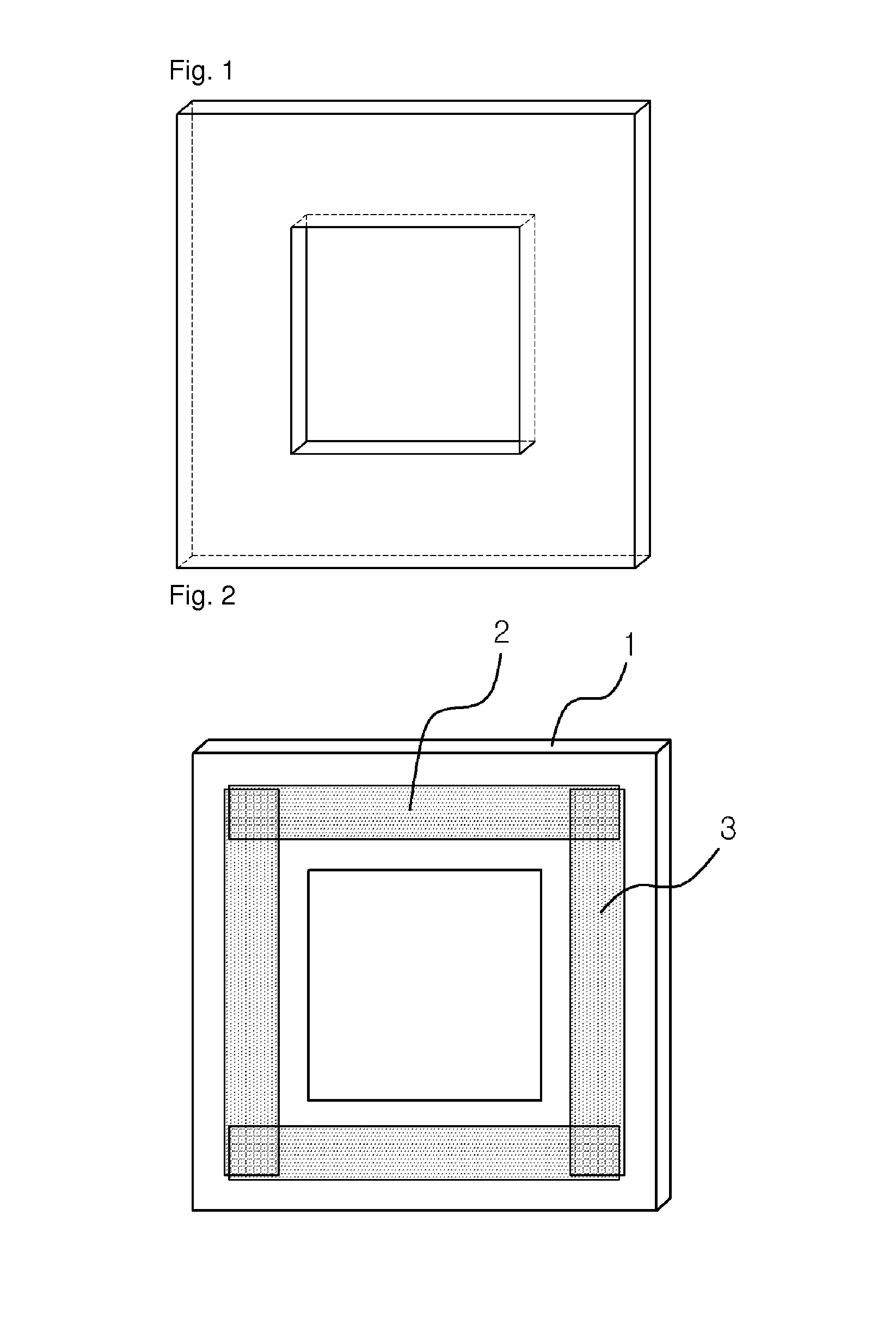Porous multi-layer film with improved thermal properties
a multi-layer film and thermal insulation technology, applied in the field of porous multi-layer film with improved thermal insulation properties, can solve the problems of increased danger of explosion, increased danger of explosion by the melt-down of the separator due to the overheat of the battery, and improved thermal insulation stability, so as to improve quality stability, permeability and electrolyte retaining properties of porous multi-layer film, the effect of superior thermal insulation
- Summary
- Abstract
- Description
- Claims
- Application Information
AI Technical Summary
Benefits of technology
Problems solved by technology
Method used
Image
Examples
example 1
[0119]In the first layer, polyethylene having a weight average molecular weight of 3.0×105, and melting temperature of 134° C. and paraffin oil having kinetic viscosity of 95 cSt at 40° C. were used. Contents of the two elements were 30 wt % and 70 wt %, respectively. In the second layer, polymethylpentene of 50 volume % having a melt index of 9.0 (260° C., 5 Kg) as a high heat-resistant resin and polypropylene of 50 volume % having a weight average molecular weight of 5.7×105 and melting temperature of 163° C. as other resins that were liquid-liquid phase separated from the high heat-resistant resin was used. CaCO3 of 50 wt % having an average particle size of 1.5 μm was used as an inorganic material.
[0120]The sheet was stretched 8 times in a machine direction (MD) at 115° C. and 6 times in a transverse direction (TD) at 120° C. after co-extruding the first layers formed on both surfaces in three layers. The extraction of the diluent was performed in an immersion method using methy...
example 2
[0121]In the first layer, polyethylene having a weight average molecular weight of 3.0×105, and melting temperature of 134° C. and paraffin oil having kinetic viscosity of 95 cSt at 40° C. were used. Contents of the two elements were 30 wt % and 70 wt %, respectively. In the second layer, polymethylpentene of 50 volume % having a melt index of 9.0 (260° C., 5 Kg) as a high heat-resistant resin and polypropylene of 50 volume % having a weight average molecular weight of 2.5×105 and melting temperature of 148° C. as other resins that were liquid-liquid phase separated from the high heat-resistant resin was used. CaCO3 of 30 wt % having an average particle size of 1.5 μm was used as an inorganic material.
[0122]The sheet was stretched 7 times in a machine direction (MD) at 115° C. and 5 times in a transverse direction (TD) at 120° C. after co-extruding the first layers formed on both surfaces in three layers. The extraction of the diluent was performed in an immersion method using methy...
example 3
[0123]In the first layer, polyethylene having a weight average molecular weight of 3.0×105, and melting temperature of 134° C. and paraffin oil having kinetic viscosity of 95 cSt at 40° C. were used. Contents of the two elements were 30 wt % and 70 wt %, respectively. In the second layer, polymethylpentene of 70 volume % having a melt index of 9.0 (260° C., 5 Kg) as a high heat-resistant resin and polyethylene of 30 volume % having a weight average molecular weight of 2.3×105 and melting temperature of 133° C. as other resins that were liquid-liquid phase separated from the high heat-resistant resin was used.
[0124]The sheet was stretched 8 times in a machine direction (MD) at 115° C. and 5 times in a transverse direction (TD) at 120° C. after co-extruding the first layers formed on both surfaces in three layers. The extraction of the diluent was performed in an immersion method using methylene chloride, having the extraction time of 5 minutes. Thereafter, secondary-stretching was pe...
PUM
| Property | Measurement | Unit |
|---|---|---|
| melting temperature | aaaaa | aaaaa |
| thickness | aaaaa | aaaaa |
| porosity | aaaaa | aaaaa |
Abstract
Description
Claims
Application Information
 Login to View More
Login to View More - R&D
- Intellectual Property
- Life Sciences
- Materials
- Tech Scout
- Unparalleled Data Quality
- Higher Quality Content
- 60% Fewer Hallucinations
Browse by: Latest US Patents, China's latest patents, Technical Efficacy Thesaurus, Application Domain, Technology Topic, Popular Technical Reports.
© 2025 PatSnap. All rights reserved.Legal|Privacy policy|Modern Slavery Act Transparency Statement|Sitemap|About US| Contact US: help@patsnap.com

